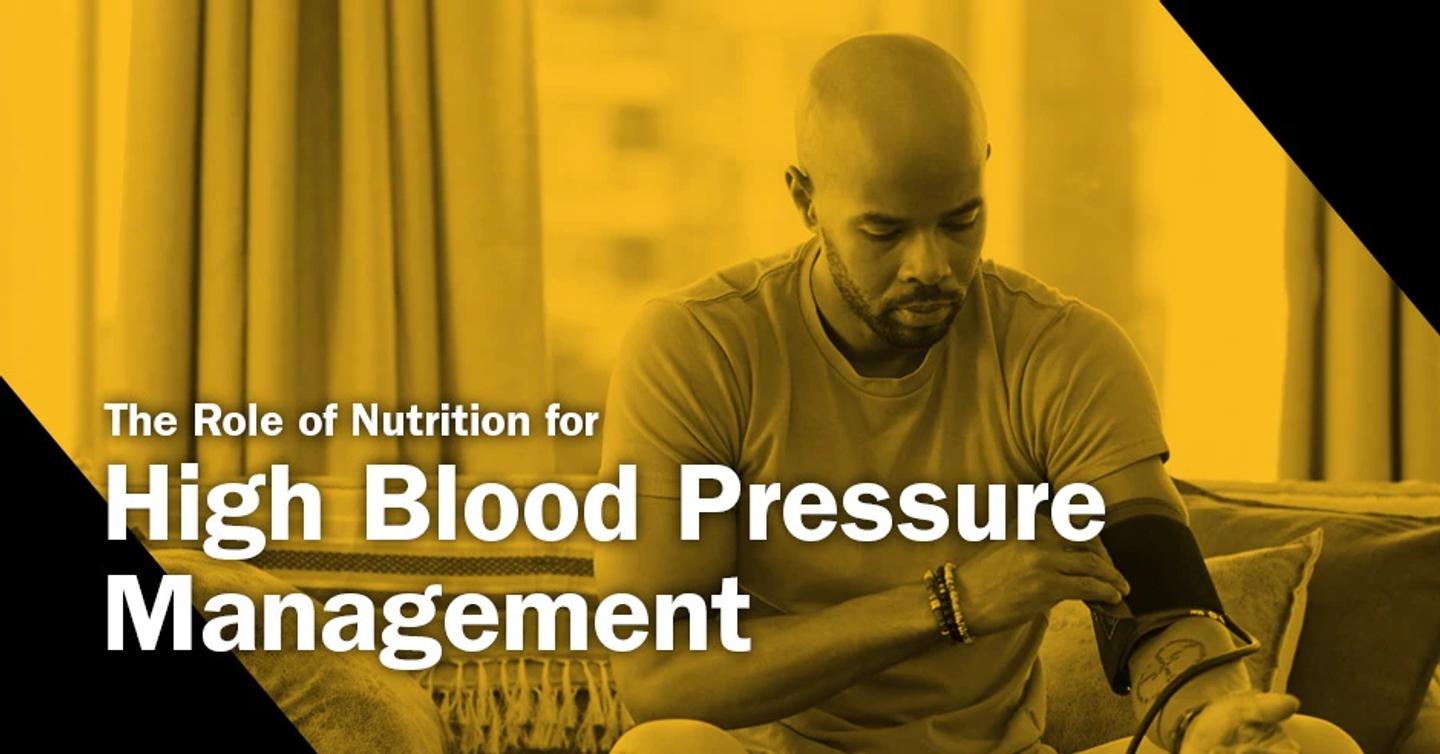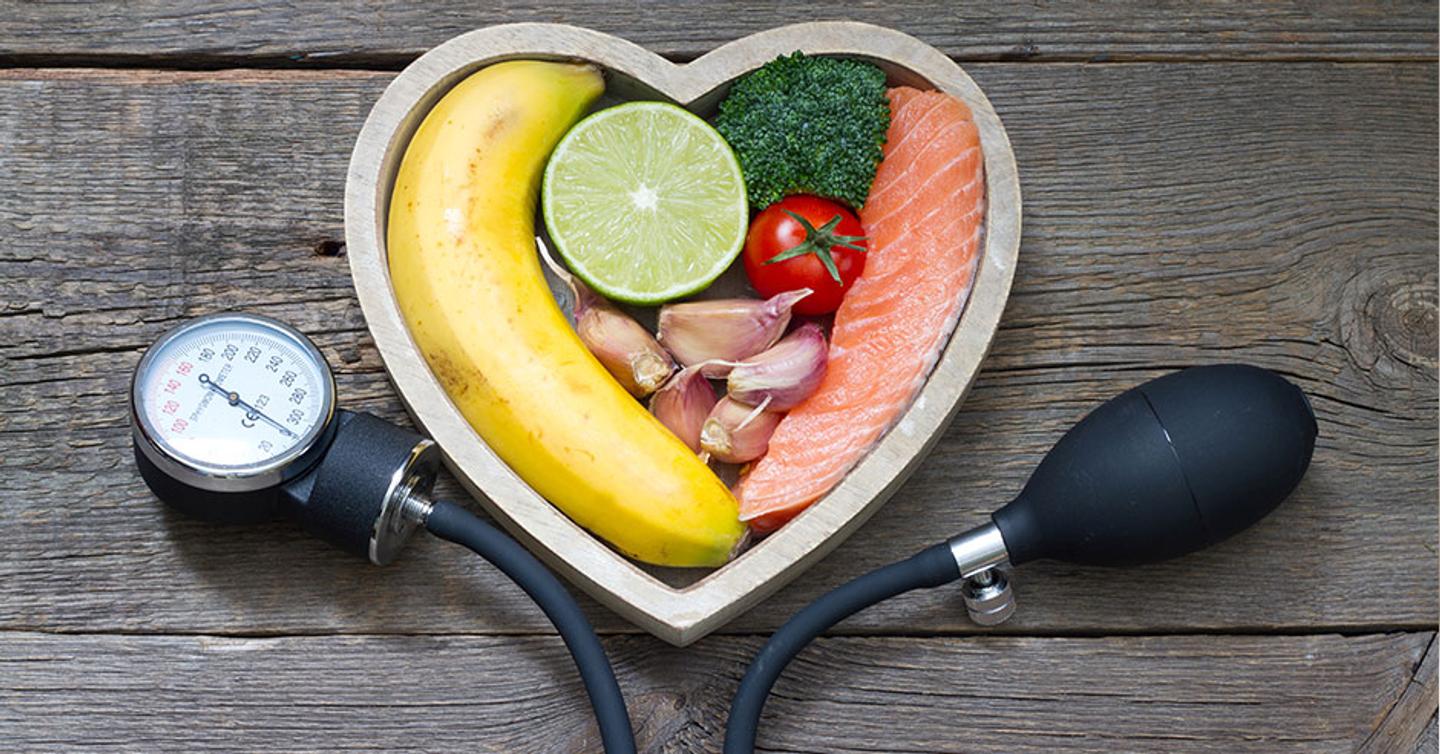
The Role of Nutrition for High Blood Pressure Management
Reading Time: 6 minutes 14 seconds
BY: ISSA
DATE: 2021-06-21
Nutrition is an essential component of good health, right alongside physical fitness. One of the many health problems the right dietary choices can improve is high blood pressure. Anyone can benefit from a diet that promotes healthy blood pressure, but food choice is especially important for adults with chronically high blood pressure.
About High Blood Pressure
High blood pressure is a chronic health problem, also known as hypertension. Blood pressure is related to the amount of blood your heart has to pump and the degree of resistance to blood flow in blood vessels. The more blood and the narrower the arteries, the higher blood pressure is.
Measuring and Diagnosing High Blood Pressure
Blood pressure is measured with two numbers:
Systolic pressure. This is the top number in a blood pressure measurement. It describes the pressure in blood vessels during a heartbeat.
Diastolic pressure. The lower number measures the pressure between heartbeats.
Blood pressure readings under 120/80 are normal. Anything over this limit is elevated but not necessarily hypertension. A stressful situation, even going to the doctor to have blood pressure measured, can cause it to spike.
Hypertension occurs when blood pressure is regularly too high. Stage 1 hypertension is 130 to 139 over 80 to 89. Stage 2 hypertension occurs when readings are over 140/90. A reading higher than 180/120 is considered an emergency.
Causes and Health Consequences
Hypertension doesn't cause noticeable symptoms, which is why it is important to measure it regularly. For most people, there is also no single, identifiable cause. This type of primary hypertension tends to develop over years and may result from unhealthy lifestyle habits.
Secondary hypertension is caused by medical conditions, like thyroid problems, sleep apnea, kidney disease, tumors, and congenital blood vessel defects. Certain medications and illicit drugs can also cause high blood pressure.
Failing to manage hypertension can lead to serious health problems: heart attack, stroke, aneurysms, heart failure, kidney disease, metabolic syndrome, vision loss, and dementia. Ultimately, high blood pressure can be deadly.
The Role of Sodium Intake in High Blood Pressure
Salt is a major risk factor for high blood pressure, although some people are more sensitive to its negative effects than others. Salt is a combination of sodium and chloride, and it's the sodium that causes problems.
When you have excess salt in your diet, your body retains water to dilute it. It's trying to maintain a certain concentration of salt. With extra water, you end up with a higher blood volume. This puts more pressure on blood vessels as the heart works harder to pump all the blood.
One meal with too much salt can raise blood pressure, but it will level out again. Eating too much salt and elevating blood pressure repeatedly can cause damage to and stiffen blood vessels. This can lead to all the damaging consequences of hypertension, like heart attack or stroke.
According to the American Heart Association (AHA), the average American consumes more than 3,400 milligrams of sodium per day. The AHA lists these recommendations for dietary sodium:
No one should consume more than 2,300 milligrams per day.
Even better is to limit daily intake to 1,500 milligrams of sodium.
Eating no more than 1,000 milligrams per day can lower blood pressure in most adults.
Cutting back on salt involves more than simply putting down the salt shaker at the dinner table. A lot of extra sodium comes from packaged and processed foods. It's important to read labels if you are worried about salt and sodium intake.
Check out this ISSA piece for more information on the benefits of reducing sodium in the diet.
How to Use Nutrition for High Blood Pressure Management
Many people with hypertension take prescriptions to lower blood pressure. Only you and your doctor can decide if you need these medications. For a lot of people, changes in lifestyle, especially diet, can reduce blood pressure significantly.

What to Eat - Nutrition for High Blood Pressure Control
To manage blood pressure, there are certain foods to avoid, but it's more motivating to focus on what you can and should eat:
Foods rich in potassium. Potassium can offset the effects of sodium on blood pressure. Studies have found that increasing potassium intake daily can reduce blood pressure. Eat more leafy greens, bananas, legumes, chia seeds, and yogurt.
Citrus. Citrus fruits may help lower blood pressure and promote good heart health. Just avoid grapefruit if you are taking blood pressure and certain other types of medications.
Fatty fish. Fish rich in omega-3 fatty acids, like salmon and mackerel, benefit heart health. They may also help reduce blood pressure by reducing inflammation and relaxing blood vessels.
Pumpkin seeds. These little seeds are rich in a lot of important nutrients, including magnesium and potassium. One study found that pumpkin seed oil, used daily, can reduce blood pressure in women.
Legumes. Beans and lentils have a blood pressure-lowering effect. They are rich in fiber and minerals that support lower blood pressure.
Celery. This often-overlooked vegetable contains phthalides, compounds that relax blood vessels. This, in turn, lowers blood pressure.
Spices and herbs. Most spices and herbs used in the kitchen have health benefits. They make your food taste better, and many have been shown to lower blood pressure. Try using more cinnamon, cilantro, cardamom, basil, ginger, and others.
Beets. Eat more beet roots and beet greens to get more nitrates in your diet. Nitrates relax blood vessels. Beets are also rich in a lot of other heart-healthy nutrients.
What to Avoid - Nutrition to Lower Blood Pressure
The most important thing to limit for managing blood pressure is sodium. The more you prepare your own food at home, the better you can control salt intake. When buying packaged food, read the label and count your total sodium intake each day. An app for recording what you eat can make this easier.
In addition to reading labels, limit these foods and ingredients to lower blood pressure and for better overall health:
Lunch meats. Deli or lunch meats are loaded with sodium, which is used to preserve them and add flavor. Just stay away from these products entirely or include them only every once in a while.
Canned soup and tomatoes. This is another processed food that is usually high in sodium. One can of soup may contain as much as 2,000 milligrams of sodium, nearly as much as you should eat in a day. Canned tomatoes and juice can have up to 600 milligrams per serving. Look for low-sodium options.
Pickles. Pickles, and other types of pickled foods, are swimming in salt. Limit these foods to occasional treats or very small servings.
Sugar. Sugar impacts blood pressure in a more roundabout way than salt. Excessive sugar contributes to weight gain and obesity, risk factors for high blood pressure. Read food labels to avoid or limit added sugar.
Alcohol. Alcohol also increases blood pressure. Limit alcohol, especially if you already have high blood pressure. If you are on a blood pressure medication, alcohol may interact with it.
Trans fat and saturated fat. Limit saturated fats and avoid trans fats completely for optimal heart and blood vessel health. Trans fats are mostly found in packaged foods like baked goods, frozen pizza, and microwave popcorn.
What About the DASH Diet?
The DASH diet (Dietary Approaches to Stop Hypertension) provides a flexible framework for eating that supports healthy blood pressure. Although it specifically targets hypertension, the DASH diet is an overall approach to eating that may be flexible enough for some people to follow over the long-term. Anyone interested in the DASH diet should consult their doctor first. The guidelines of the DASH diet include:
Six to eight servings of whole grains per day
Four to five servings of vegetables per day
Four to five servings of fruit per day
Two to three servings of dairy per day
Six or fewer one-ounce servings of lean meat, fish, or poultry per day
Four to five servings of nuts seeds and legumes per week
Two to three servings of fats and oils per day
Fewer than five servings per week of sweets
Within these guidelines are recommendations for the healthiest choices of each type of food. For instance, the DASH diet recommends low-fat dairy foods, a focus on health, unsaturated fats, and limited amounts of saturated fat.
Clients often have a limited understanding of how important dietary fats are. Use this ISSA guide to explain why they need some types of fats and should avoid others.
Keep in mind that some people respond to dietary changes better than others. Some need medications to control blood pressure at healthy levels. It's a great idea to make healthier diet choices, but don't forget to see your doctor or to recommend your clients see their doctors about high blood pressure.
Nutrition is just as important as fitness, and if you have a passion for it, consider becoming a nutrition coach. The ISSA offers a comprehensive online Certified Nutrition Coach course you can complete at your own pace.